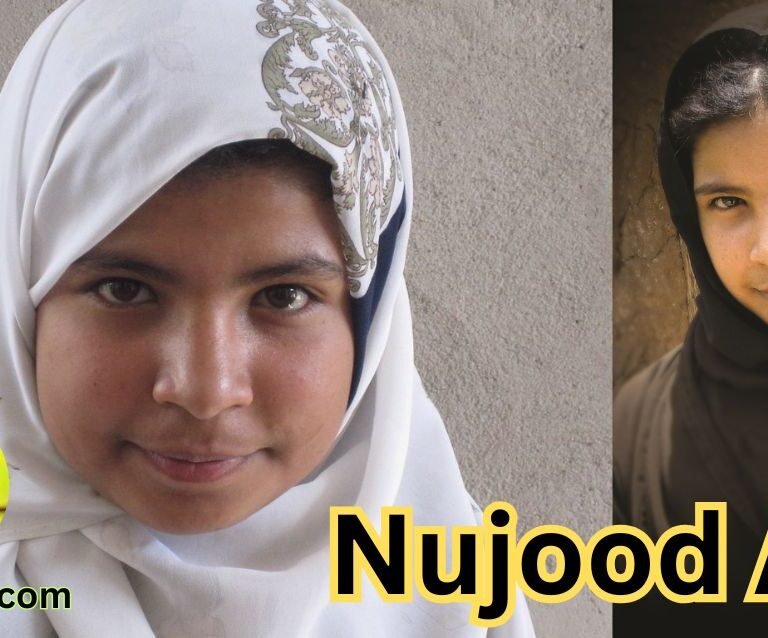The New Community Landscape
The concept of community has undergone significant transformations as a result of the global pandemic, leading to a redefinition of belonging in a post-pandemic hybrid society. The effects of lockdowns and social distancing have necessitated a shift in how individuals connect and interact with one another. As we navigate this new landscape, it is critical to analyze the ways in which technology, personal interactions, and cultural shifts contribute to this evolving definition of community.
In the wake of the pandemic, many individuals have turned to digital platforms to forge connections that were once nurtured in physical spaces. Social media, video conferencing, and community-driven apps have become vital tools for maintaining relationships and engaging with others. These technologies offer unprecedented opportunities for communication, bridging geographical divides and allowing people to establish meaningful connections regardless of location. However, as the boundaries of traditional communities blur, it is essential to consider how this reliance on technology impacts the depth and authenticity of interpersonal relationships.
Furthermore, the cultural shifts that have emerged during the pandemic have instigated a reevaluation of what it means to belong. The rise of remote work and hybrid living arrangements may result in a more flexible, but perhaps less cohesive, community structure. New forms of group interactions are forming through various online platforms, creating diverse sub-communities that cater to specific interests and identities. This phenomenon raises questions about inclusivity and the extent to which individuals feel genuinely connected to these virtual spaces.
Understanding the new community landscape requires an examination of these changes in connectivity, interactions, and cultural contexts. Acknowledging the complexities of belonging in this post-pandemic world is crucial for fostering vibrant communities that accommodate diverse experiences and perspectives. With evolving societal norms, the essence of community continues to adapt, reflecting the dynamic nature of human relationships in a hybrid society.
The Impact of Remote Work on Community Dynamics
The transition to remote work has significantly altered community dynamics, reshaping how individuals connect both professionally and personally. This shift has been catalyzed by the global pandemic, which necessitated a reevaluation of workplace structures. One of the most notable benefits of remote work is the reduction in commute times. By eliminating long hours spent in transit, individuals can invest more time in community engagement or personal well-being, ultimately leading to a more balanced life.
Additionally, remote work fosters expanded networking opportunities. Employees can engage with peers and industry professionals via virtual platforms, breaking geographical barriers that previously restricted interaction. This increased accessibility can lead to enhanced collaboration and innovation within teams, as diverse perspectives are shared more readily. The ability to connect with individuals from varying backgrounds and locations can enrich one’s professional community, making it more inclusive and varied.
However, alongside these advantages, remote work presents some challenges that can undermine a sense of belonging within the community. Many individuals report feelings of isolation and disconnection from their colleagues and organizational culture. The informal interactions that occur in a traditional office setting—such as casual conversations during breaks or shared lunches—are often lost in a remote work environment. These interactions are crucial for building camaraderie and a sense of belonging among coworkers.
Moreover, for some, the absence of face-to-face engagement can lead to a diminished workplace culture, which can impact overall morale and motivation. Employees may feel disengaged from their organization’s mission or lacking in support, leading to potential adverse effects on mental health. The challenge lies in finding innovative and effective ways to maintain and foster community bonds in an increasingly hybrid work environment.
Digital Communities: Online Connections in a Hybrid World
The emergence of digital communities has marked a significant shift in the way individuals connect and interact, particularly in the context of a post-pandemic society. The global health crisis accelerated the reliance on online platforms, highlighting their pivotal role in fostering connections across geographical boundaries. Social media platforms, forums, and various online spaces have become crucial in enabling people to maintain relationships and build new ones, even amid physical distancing measures.
In a world that has experienced separation and isolation, these digital communities provide essential support and camaraderie. Individuals who may have felt alone due to the disruptions of the pandemic can now find like-minded peers who share similar interests and experiences. This phenomenon is particularly relevant for marginalized groups or those living in remote areas, as online spaces can promise a sense of belonging that may otherwise elude them. The ability to communicate and engage with a global audience not only enriches personal connections but also strengthens the collective voice of diverse communities.
Furthermore, the rise of digital communities has shifted the dynamics of social interaction. Virtual meetups, webinars, and online discussion forums facilitate inclusive dialogues that transcend traditional barriers. These platforms allow individuals to express themselves freely and participate actively, promoting a culture of shared knowledge and solidarity. In this hybrid society, where face-to-face interactions are increasingly supplemented by digital engagement, the significance of online connections cannot be understated.
Overall, digital communities represent a crucial avenue for fostering relationships in a post-pandemic world. They provide a vital lifeline for those seeking connections and belonging in an evolving social landscape. By embracing these online spaces, individuals can navigate their experiences and forge new bonds, ultimately redefining their understanding of community.
Physical Spaces: The Evolution of Community Centers
The landscape of community centers has undergone a significant transformation in the wake of the pandemic, adapting to new social dynamics that prioritize inclusivity and interaction. Traditionally, community centers served as gathering places for activities and events. However, as society navigates the post-pandemic era, there is an increasing recognition of the need for these spaces to evolve in order to foster connection among individuals. The challenge now lies in reimagining these spaces to accommodate a more diverse range of activities while ensuring they remain accessible to all.
One of the key changes has been the emphasis on multi-functional spaces that can serve various purposes. For instance, community centers are being designed with flexible layouts that can easily transition from hosting social events to serving as educational workshops or co-working spaces. This adaptability not only caters to different community needs but also encourages a greater sense of belonging as members of the community gather for a range of experiences. Moreover, outdoor spaces are gaining importance as safe venues for social interaction, allowing people to connect in a natural setting while maintaining a sense of safety.
In addition to physical changes, community centers are becoming platforms for inclusivity. Programming is now being tailored to reflect the diverse backgrounds and interests of community members. Programs that promote cultural exchange, mental health awareness, and skill-building workshops are gaining traction, each designed to foster connections and encourage dialogue. This shift is critical in ensuring that community centers are not just places of attendance but are actively woven into the social fabric of the community.
As society continues to adapt to the post-pandemic world, the evolution of community centers represents a profound opportunity to redefine what it means to belong. These spaces play a vital role in bridging the gap between individuals and provide essential connections for those returning to in-person interactions.
Cultural Shifts: Redefining Belonging and Inclusivity
In recent years, a significant transformation has occurred in the cultural landscape, directly impacting concepts of belonging and inclusivity within communities. The aftermath of the pandemic has prompted a reassessment of societal values, highlighting the importance of diversity and representation in fostering a sense of belonging. Traditionally, belonging was often defined by geographical or social proximity; however, this understanding has evolved. Today, individuals seek communities that resonate with their identities, where diverse voices are not only heard but celebrated.
One pivotal aspect of this cultural shift is the increased awareness of mental health. The pandemic unveiled the fragility of human connection, prompting deeper conversations about emotional well-being and its ties to community life. As communities grapple with these new dynamics, there is a growing recognition that inclusivity extends beyond mere representation—it is about cultivating environments where individuals feel valued and understood. This shift means that physical spaces like workplaces and social gatherings must adapt to promote mental health by integrating practices that respect and elevate diverse experiences.
Furthermore, digital platforms have revolutionized community interactions, enabling connections across geographical barriers. These platforms allow marginalized voices to gain visibility, fostering a more inclusive dialogue about belonging. The juxtaposition of physical and virtual spaces has created a hybrid approach to community that values diversity as a key pillar of engagement. As communities evolve, a commitment to inclusivity must remain at the forefront, ensuring that all individuals have access to supportive networks that affirm their identities.
Consequently, communities must continuously adapt their values and practices to align with these cultural shifts. By prioritizing diversity, representation, and mental health awareness, societies can redefine belonging in a manner that is not only inclusive but also enriching for all members.
Local Initiatives: Grassroots Movements and Community Building
In the wake of the pandemic, communities have experienced significant transformations, prompting a resurgence in grassroots movements aimed at fostering connection and support among residents. These local initiatives are pivotal in driving community engagement, as they directly address the evolving needs of a hybrid society where remote and in-person interactions coalesce. The emergence of these movements signifies a shift towards more localized approaches to community building, emphasizing the importance of inclusivity and social connection.
One of the key characteristics of grassroots movements is their ability to adapt to the unique challenges posed by hybrid living. For instance, new platforms have been developed that facilitate both online and offline gatherings, allowing individuals to participate regardless of their circumstances. These platforms often center around shared interests or common goals, which helps to create a sense of belonging among members. By focusing on what unites individuals, these initiatives effectively combat feelings of isolation that have been exacerbated during the pandemic.
Moreover, local initiatives often prioritize inclusivity by engaging diverse community members, ranging from neighborhood associations to art collectives. These organizations work to break down barriers by providing resources, educational programming, and forums where all voices can be heard. In doing so, they foster supportive networks that empower residents to contribute actively to their communities, thereby reinforcing social cohesion in a post-pandemic landscape.
As cities and towns continue to adjust to a new normal, the role of grassroots movements in promoting community building cannot be overstated. By encouraging active participation and collaboration among residents, these initiatives are laying the groundwork for resilient and connected communities. Their focus on social connection and engagement is not only crucial for recovery but also for reimagining the fabric of community life in a hybrid society.
Challenges of Hybrid Living: Navigating Social Interactions
The emergence of a hybrid living environment has brought about significant challenges, particularly concerning social interactions. As communities grapple with the implications of returning to in-person gatherings following pandemic restrictions, individuals often experience heightened feelings of anxiety and uncertainty. These emotions are rooted in the changes to established norms of social behavior and the ongoing fears surrounding health and safety in communal settings.
One of the main challenges individuals face is the anxiety associated with transitioning from virtual interactions to face-to-face meetings. While online platforms have provided a convenient means of connecting, they lack the depth and richness of in-person communication. Many individuals now find themselves questioning the appropriateness of social gatherings, leading to hesitation in accepting invitations or participating in social events. This hesitation can exacerbate feelings of isolation, as individuals may perceive that their peers are more comfortable re-engaging socially, furthering their own sense of exclusion.
Moreover, the constant evolution of public health guidelines fuels uncertainty. Community members often feel unsure about what constitutes safe social behavior, creating a barrier to re-establishing connections. For example, individuals may struggle with deciding whether to wear masks or maintain physical distance during gatherings. To address these barriers and foster a sense of safety and belonging, communities need to cultivate environments that encourage open communication. By establishing clear guidelines for social interactions and sharing resources related to welfare protocols, communities can empower individuals to engage in social activities with confidence.
In addition to establishing clear safety protocols, fostering inclusivity and understanding within social circles plays a critical role in reducing anxiety. Communities should create supportive spaces that encourage dialogue about individuals’ concerns, promoting a culture of empathy and shared experiences. By acknowledging the unique challenges of hybrid living, communities can help individuals navigate their social interactions and emerge with a renewed sense of belonging.
The Importance of Mental Health in Community Engagement
In contemporary society, particularly in the wake of a global pandemic, the significance of mental health in community engagement has become increasingly apparent. Communities serve as essential pillars for mutual support and social interaction, fostering a sense of belonging that contributes to individual well-being. Engaging in community activities can markedly enhance mental health by providing opportunities for connection, fostering a support system, and promoting emotional resilience among members.
Community initiatives, including organized social gatherings, support groups, and wellness programs, play a vital role in addressing mental health challenges. Such initiatives can serve as a platform for individuals to share their experiences and challenges, thereby reducing feelings of isolation. When community members collectively prioritize mental well-being, they create an environment where seeking help is normalized and stigma surrounding mental health is diminished. Ultimately, this offers a foundation for individuals to recognize their shared struggles and triumphs, fostering a deeper sense of belonging.
Moreover, the communal responsibility towards mental health cannot be overlooked. It is essential for community leaders and members alike to cultivate a culture that values mental health as much as physical health. This can be achieved through the implementation of educational programs that raise awareness about mental health issues and available resources. By informing community members about the positive impacts of mental well-being, individuals can be empowered to take proactive steps toward seeking support, ultimately benefitting the entire community.
In essence, promoting mental health at a community level aids in creating a connected society that values the importance of belonging and mutual support. The role of community in enhancing mental well-being cannot be underestimated, as together we can work towards a healthier and more inclusive hybrid society.
Looking Ahead: The Future of Community in a Hybrid Society
As we navigate through the shifting landscape following the pandemic, the concept of community is on the brink of transformation. The hybrid society, characterized by a blend of physical and digital interactions, is ushering in new ways of belonging and social connectivity. One of the most notable trends is the increased reliance on technology to enhance community engagement. Virtual platforms serve as vital instruments for communication, enabling individuals to form connections that transcend geographical boundaries. As technology continues to evolve, we may witness innovations that further facilitate these interactions, creating immersive experiences that replicate the nuances of physical gatherings.
Another significant factor shaping the future of community is the re-evaluation of social norms and values that emerged during the pandemic. The crisis brought to light the importance of inclusion, empathy, and support systems within communities. As societies re-open, there is a collective recognition of the need for genuine connections that prioritize mental well-being alongside productivity. This shift could lead to an emphasis on holistic approaches to community building, where emotional and psychological support becomes integral to social structures.
Moreover, the hybrid model encourages a diverse range of community formations. Localized groups may emerge, driven by shared interests or challenges, while simultaneously allowing for a global exchange of ideas and experiences. Communities are more likely to embrace inclusivity, creating spaces where various demographics can engage and contribute. As collaboration becomes increasingly essential, we may see hybrid communities actively participating in discussions about social responsibility, sustainability, and equity.
In light of these trends, it is crucial for individuals and organizations to adapt to the changing dynamics of community interactions. Building a robust sense of belonging will require embracing both the technological advancements and the renewed social values that characterize our hybrid society. The future of community holds promise for richer connections, guided by a shared understanding of the diverse needs and aspirations of its members.









